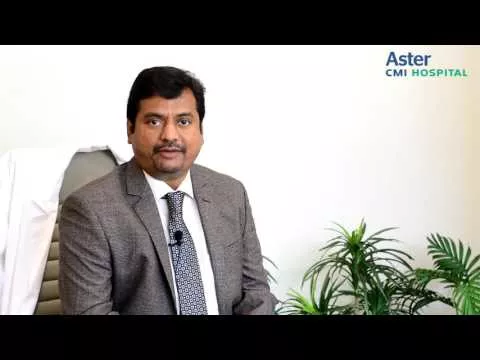Each year, millions of people die and become disabled because of cerebrovascular illnesses like stroke. Stroke is the leading cause of death and disability worldwide. The effectiveness of conventional stroke treatments has been hampered. Endovascular therapy, a novel approach to treating stroke and other cerebrovascular illnesses, is transforming these fields of medicine.
Understanding Stroke and Cerebrovascular Diseases
When the blood supply to a portion of the brain is cut off, the brain cells are deprived of oxygen and nutrients, which results in a stroke. This may result in brain injury and lasting impairment. The two main subtypes of stroke are hemorrhagic stroke and ischemic stroke. The most frequent type of stroke is an ischemic stroke, which is brought on by a blood clot blocking a cerebral artery. Less frequently occurring hemorrhagic strokes are brought on by burst blood vessels in the brain. Many incapacitating symptoms, such as paralysis, trouble speaking, and cognitive damage, can result from these strokes. The likelihood of having a stroke is increased by several risk factors, including obesity, diabetes, smoking, and high blood pressure.
Brain blood vessels are impacted by illnesses known as cerebrovascular diseases. Certain circumstances may make stroke riskier. Cerebrovascular illnesses have an impact that goes beyond physical limitations; they stress patients' loved ones who frequently take on the role of carer as well as have an emotional and psychological impact on sufferers. Early intervention is essential to enhancing outcomes and quality of life given these serious effects. Many prevalent cerebrovascular conditions include:
- Carotid artery stenosis: the carotid arteries, which carry blood to the brain, narrowing.
- Aneurysm: A protrusion in a blood artery in the brain.
- Arteriovenous malformation (AVM): A tangle of aberrant blood arteries in the brain.
Traditional Treatment Approaches
Stroke has traditionally been treated with thrombolysis, a drug that dissolves blood clots. Nonetheless, thrombolysis is only useful if it is administered shortly after the development of stroke symptoms. Surgery, which is used to remove blood clots or repair damaged blood arteries, is another traditional treatment for stroke. Surgery can, however, be risky and is not always an option. Although many people have benefited from these techniques, they frequently have restrictions and downsides. The effectiveness of medications is not always guaranteed, and rehabilitation can be a difficult and drawn-out procedure.
Endovascular Treatment
Endovascular therapy, commonly referred to as minimally invasive neuro-intervention or neurointerventional surgery, represents a significant advancement in the treatment of cerebral vascular disorders and stroke. Endovascular treatment is carried out by threading catheters and devices into blood arteries, often beginning in the groin and moving forward to the damaged part of the brain, in contrast to older procedures, which frequently need open surgery. To treat ischemic stroke, endovascular therapy is frequently performed. Other cerebrovascular conditions including carotid artery stenosis and aneurysms can also be treated with it. This method has a number of significant benefits, including less physical harm to the body, quicker recuperation times, and a lesser possibility of problems like infections or heavy bleeding. Moreover, endovascular therapy can more accurately address the issue's origin, potentially leading to improved results for patients.
The Endovascular Treatment Process
The evaluation and selection of the patient is the first step in the endovascular therapy process. To decide whether endovascular treatment is a viable choice, the doctor will evaluate the patient's medical history, risk factors, and stroke symptoms. The patient may need to go through some pre-treatment preparations if endovascular treatment is recommended, like taking blood thinners and antibiotics. Operating rooms are where the actual endovascular operation is carried out. The patient will receive general anaesthesia or be sedated. The catheter will be threaded up to the brain by the physician through an artery in the arm or groyne. The blood clots are subsequently removed, the blood arteries are repaired, or stents or balloons are implanted using the catheter. The procedure normally takes a few hours. The patient will need to stay in the hospital for observation for a few days following the procedure. Also, they will require medication to stop blood clots and infections.
Effectiveness of Endovascular Treatment
Clinical research has indicated that endovascular therapy can improve patient outcomes. Endovascular therapy can enhance cerebral blood flow, lower the risk of impairment, and enhance patient quality of life. The success rate has been remarkably high, and numerous patients have made considerable recoveries. A paradigm shift in the treatment of stroke and cerebrovascular disease may be possible when comparing the results of endovascular treatment with those of conventional techniques. Endovascular therapy's minimally invasive design speeds up recovery and lowers the possibility of complications that could occur with open surgery.
Advancements and Innovations
The field of endovascular therapy is rapidly developing. To increase the efficacy and safety of endovascular treatment, researchers are continually creating novel methods and tools. The creation of novel clot-removal devices is one area of active study. These tools are intended to remove blood clots more successfully and securely than conventional techniques. The creation of novel balloons and stents is another field of research. The goal of these devices is to increase blood supply to the brain while lowering the possibility of problems.
Risks and Considerations
While endovascular therapy has many benefits, there are also some possible hazards. People should be aware of potential side effects including infection, bleeding, or clot formation and talk to their doctor about any concerns they may have. Furthermore, not all patients are good candidates for endovascular therapy, and careful selection is essential to achieving the greatest results.
The field of endovascular therapy is quickly developing and has the potential to transform how stroke and cerebrovascular disorders are treated.














